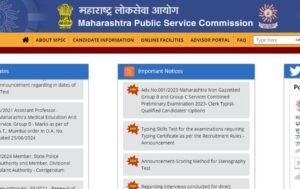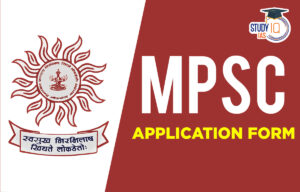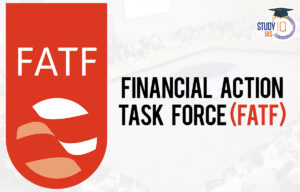Daily Current Affairs for UPSC 2023
Q) Recently seen in news, the term ‘Zero Trust Architecture’ is best related to which one of the following?
- A phenomenon of increasing distrust among various social groups
- An artificial intelligence-generated design of bank notes
- A zero-tolerance policy towards the weaponization of space
- A security framework to authenticate the user’s access to database
Daily Current Affairs for UPSC – 29 April 2023
Explanation:
- Option (4) is correct: Zero Trust Architecture is a security framework requiring all users in and outside the network of an organization to be security checked, authenticated, authorised, and validated before being granted physical or virtual access to an enterprise, its systems, applications and datapool. It is a strategic approach to cybersecurity that secures an organization by eliminating implicit trust and continuously validating every stage of a digital interaction. The term, originally coined by John Kindervag, runs on the principle of ‘Never Trust, Always Verify’. It requires strict verification of any device or person trying to access information on a private network inside or outside of a network perimeter. According to few experts, ‘Zero trust’ architecture will be the cornerstone of data security in India.
Q) Consider the following statements about prevalence of Anemia in India:
- The lack of vitamin B12 is also one of the leading causes of anemia.
- As per the Lancet Global Health survey, more than Fifty percent of men in India are anemic.
- Pradhan Mantri Surakshit Matritva Abhiyan focuses on post-natal checkups to detect and treat cases of anemia.
Which of the statements given above is/are correct?
- 1 only
- 1 and 2 only
- 2 and 3 only
- 1, 2 and 3
Explanation:
- Statement 1 is correct: A study published in the journal ‘BMJ Nutrition’ found that food fortification using only folate and vitamin B12 may not be sufficient to address the problem of anaemia in women. Anemia is a medical condition characterized by a lack of healthy red blood cells or hemoglobin in the blood. Hemoglobin is a protein in red blood cells that carries oxygen from the lungs to the body’s tissues. There are several types of anemia, including:
- Iron-deficiency anemia, which is the most common type and is caused by a lack of iron in the body.
- Vitamin-deficiency anemia, which is caused by a lack of vitamin B12 or folate, and
- Hemolytic anemia, which is caused by the destruction of red blood cells.
- Statement 2 is incorrect: According to the National Family Health Survey 2019-20, Indian women and children are overwhelmingly anaemic. Under phase I, 22 states and UTs were surveyed and in a majority of these states and UTs, more than half the children and women were found to be anaemic. WHO estimates that 42% of children less than 5 years of age and 40% of pregnant women worldwide are anaemic. The Lancet Global Health survey revealed that nearly one in four men (23.2%) in the age group 15-54 years in India were anaemic (mild, moderate, or severe). Iron-deficiency anemia is the most common form, making up about 50% of all anemia cases in India.
- Statement 3 is incorrect: Pradhan Mantri Surakshit Matritva Abhiyan (PMSMA) has been launched to focus on conducting special Antenatal care check up on 9th of every month with the help of medical officers to detect and treat cases of anemia. Government implements Anganwadi Services, Pradhan Mantri Matru Vandana Yojana and a Scheme for Adolescent Girls under the Umbrella of ICDS as targeted interventions to address the problem of malnutrition in the country. POSHAN Abhiyaan is a flagship national nutrition mission to improve nutrition among children, pregnant women and lactating mothers.
Q) With reference to National Intelligence Grid (NATGRID), consider the following statements:
- The NATGID can also access an individual’s banking information.
- It is an independent organization that works in collaboration with various intelligence agencies.
- In order to obtain data on crimes, NATGRID can access police station databases in India.
Which of the statements given above is/are correct?
- 1 and 2 only
- 1 and 3 only
- 2 and 3 only
- 1, 2 and 3
Explanation:
- Statement 1 is correct but statement 2 is incorrect: National Intelligence Grid (NATGRID) is ready to scale up surveillance by offering real-time 360 degree profiling of individuals and other entities to authorised Central and State agencies for intelligence gathering and law enforcement purposes. NATGRID is an attached office of the Ministry of Home Affairs that has been created as an IT platform to assist the intelligence and law enforcement agencies in ensuring national and internal security, with the ultimate aim of counter-terror. The NATGRID has been envisaged as a robust mechanism to track suspects and prevent terrorist attacks with real-time data and access to classified information like immigration, banking, individual taxpayers, air and train travels.
- Statement 3 is correct: NATGRID will have access to the Crime and Criminal Tracking Network and Systems (CCTNS), a database that links crime information, including First Information Reports, across 14,000 police stations in India.
Q) Consider the following statements about Asian Elephant:
- The eldest and largest female in the herd of elephants is considered as incharge.
- Asian elephants are listed as endangered on the IUCN Red List.
- As per the 2017 Elephant Census, the state of Uttar Pradesh has the highest elephant population.
Which of the statements given above is/are correct?
- 1 and 2 only
- 1 and 3 only
- 2 and 3 only
- 3 only
Explanation:
- Statement 1 is correct: There are three subspecies of Asian elephant which are the Indian, Sumatran and Sri Lankan. The elephant herd is led by the oldest and largest female member (known as the matriarch). This herd includes the daughters of the matriarch and their offspring. Females between 14 – 45 years may give birth to calves approximately every four years with the mean inter-birth intervals increasing to five years by age 52 and six years by age 60.
- Statement 2 is correct: Elephants are included under IUCN Red List under the category Endangered, Wildlife (Protection) Act, 1972: Schedule I, CITES: Appendix I. Reports suggest that China, India, Bangladesh, Thailand, Vietnam, and Sumatra have each lost more than half of their suitable elephant habitat range, with the greatest declines in China (around 94%) and India (around 86%). Major threats include Escalation of poaching, habitat loss, human-elephant conflict, mistreatment in captivity, abuse due to elephant tourism, rampant mining, and Corridor destruction.
- Statement 3 is incorrect: As per Elephant Census (2017), Karnataka has the highest number of elephants (6,049), followed by Assam (5,719) and Kerala (3,054). More than 60% of the world’s elephant population is in India. Habitats suitable for Asian elephants across Asia have decreased by over 64% equating to 3.3 million square kilometers of land since 1700, estimates a recent study.
Q) With reference to State of India’s Environment Report 2023, consider the following statements:
- The report was recently released by the NITI Aayog.
- According to the survey, air pollution in India shortens livespan by up to five years.
Which of the statements given above is/are correct?
- 1 only
- 2 only
- Both 1 and 2
- Neither 1 nor 2
Explanation:
- Statements 1 is incorrect: State of India’s Environment Report 2023 has been released by non-profit Centre for Science and Environment. Topics ranging from climate change, agriculture and industry to water, plastics, forests and biodiversity have been covered in the report. More than 30,000 water bodies in the country have been encroached. About 150,000 tonnes of municipal solid waste is generated in India every day. More than half of it is either dumped in landfills or remains unattended.
- Statement 2 is correct: Four years and 11 months is the average lifespan lost to air pollution in India. Compared to urban India, rural India is losing more years due to air pollution-related health issues. India has witnessed extreme weather events on 271 days. These events have claimed over 2,900 lives. Global rank in meeting the UN sustainable development goals (SDGs) of India has slipped by nine places. India’s ranking is lower than its four South Asian neighbors namely, Bangladesh, Bhutan, Sri Lanka, and Nepal. Despite loss in forest areas, there is a positive trend of communities demanding their rights over forests, and these rights are being granted.


 MPSC Rajyaseva 2025 Notification, Eligib...
MPSC Rajyaseva 2025 Notification, Eligib...
 MPSC Application Form 2025, Apply Online...
MPSC Application Form 2025, Apply Online...
 Financial Action Task Force (FATF), Func...
Financial Action Task Force (FATF), Func...





















